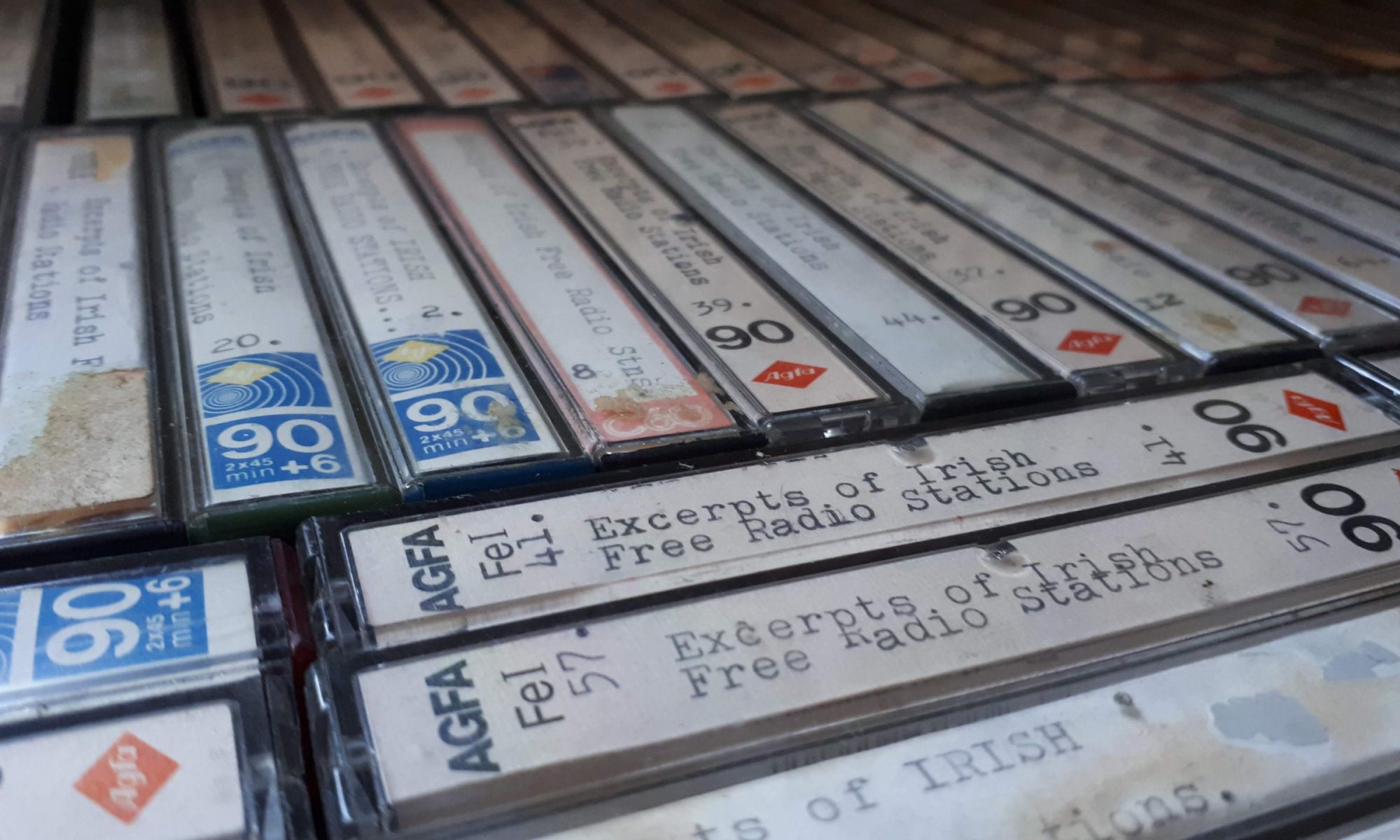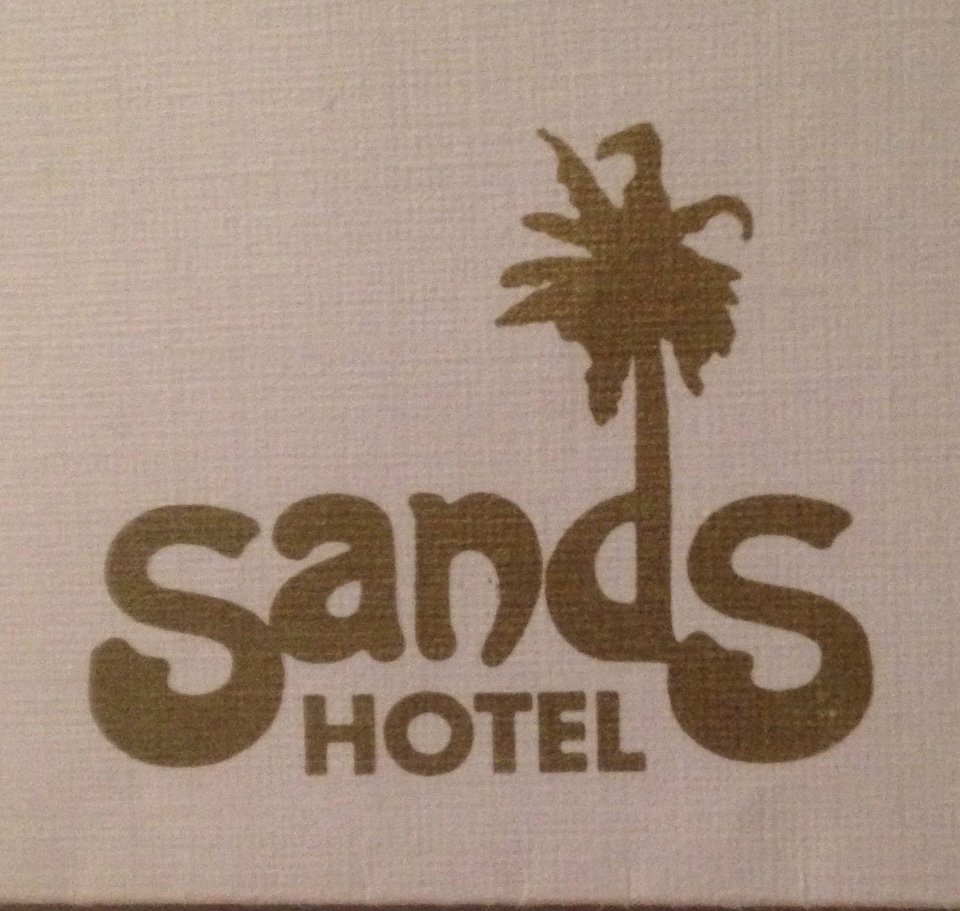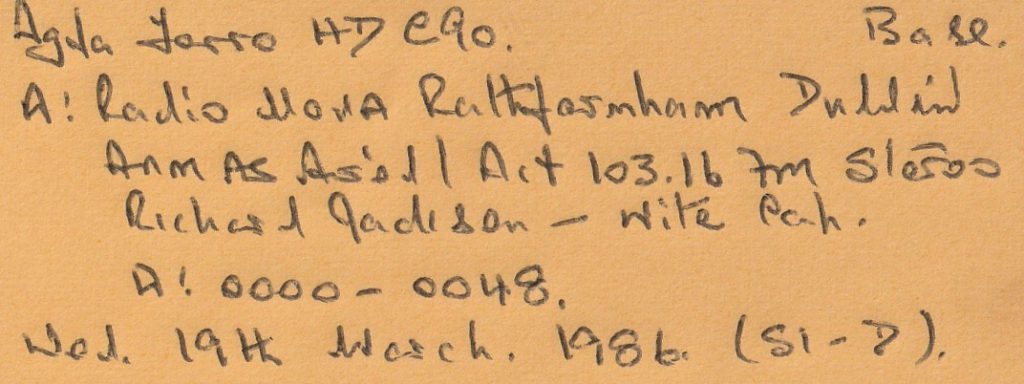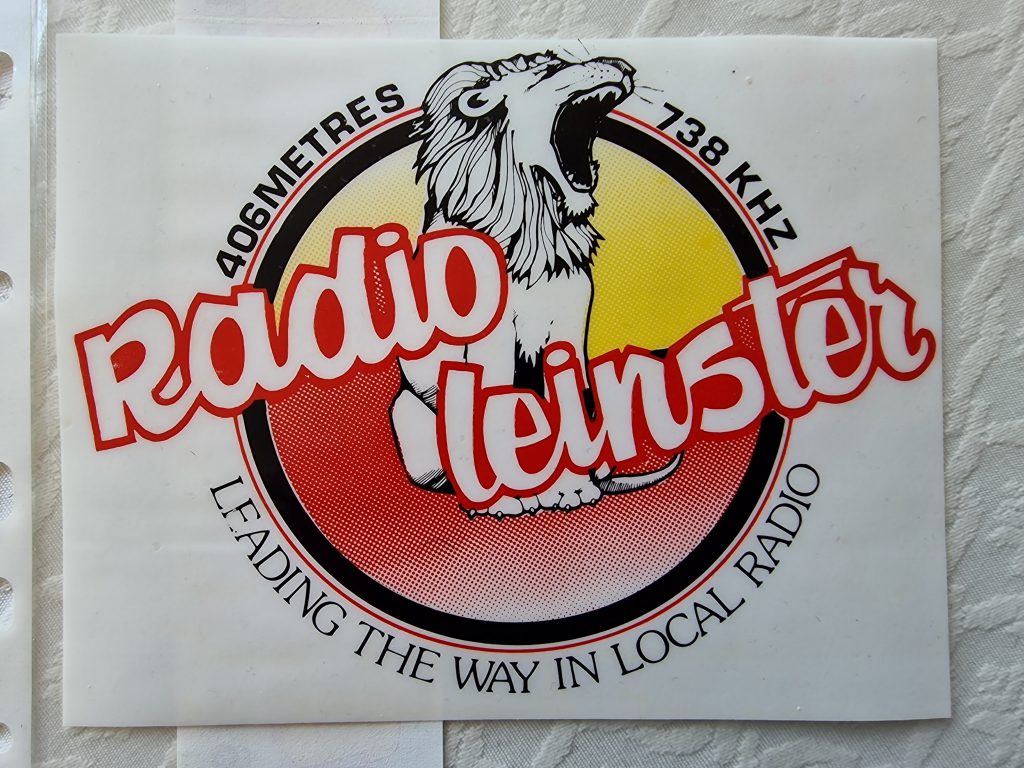Podcast: Play in new window | Download
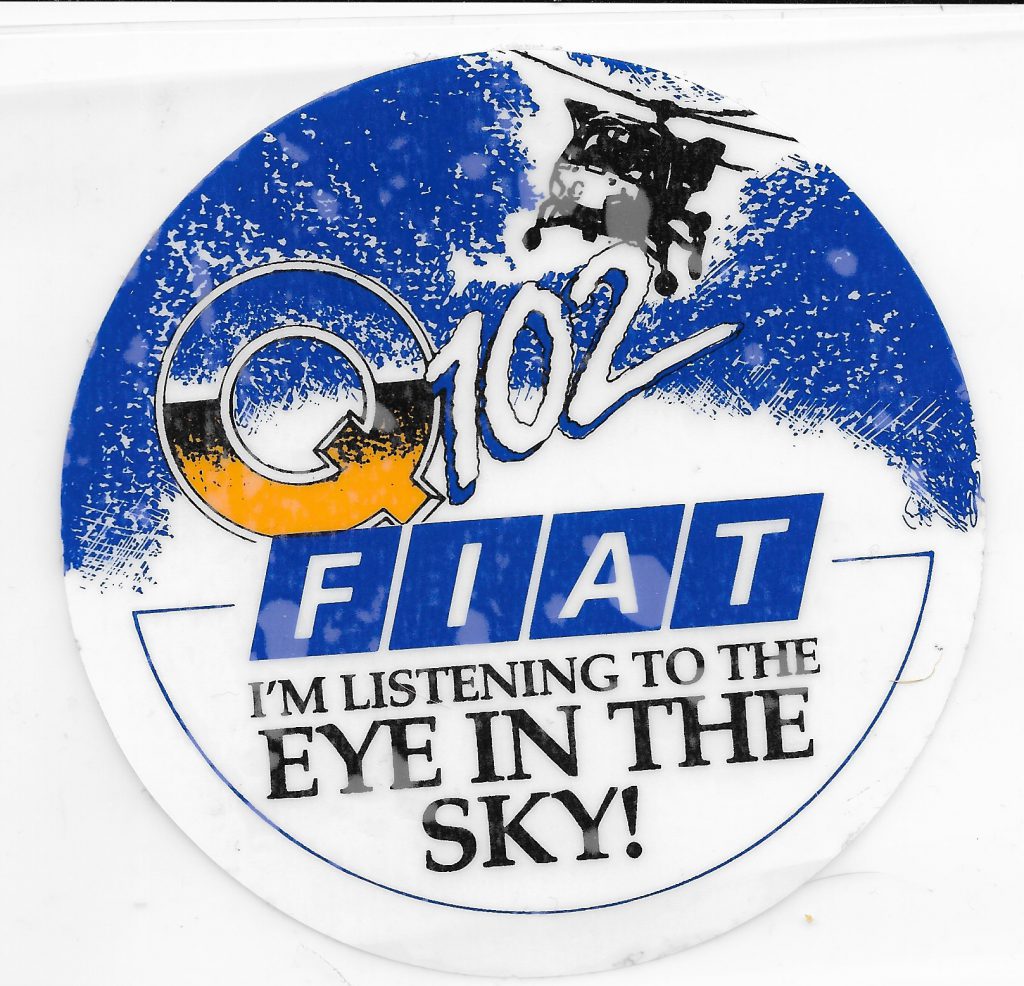
One of the stand-out features of Dublin super-pirate Q102 was its live traffic reports every morning from a helicopter flying over the city. The Eye in the Sky service was presented by general manager Mike Hogan from the skies above Dublin and quickly became the go-to place for up-to-date traffic information. In this excerpt from the breakfast show in spring 1986, DJ Greg Gaughren chats to Mike Hogan who is grounded due to helicopter maintenance but nonetheless phones in traffic reports from his car. Greg is joined in studio by another familiar voice, Martin Block. News at 2 minutes to the hour is read by Bryan Jennings and Scott Williams then takes over in the mid-morning slot. All presenters went on to have careers in licensed independent radio or RTÉ.
This recording is from the Anoraks Ireland Collection and was made from 103.5 FM on 27th March 1986 between 0817-0905. The tape was made during an interesting period in the Dublin radio scene, as the city’s biggest station Radio Nova had closed down just over a week previously. Another month would pass before Nova’s successful successor station, Energy 103, hit the airwaves.
